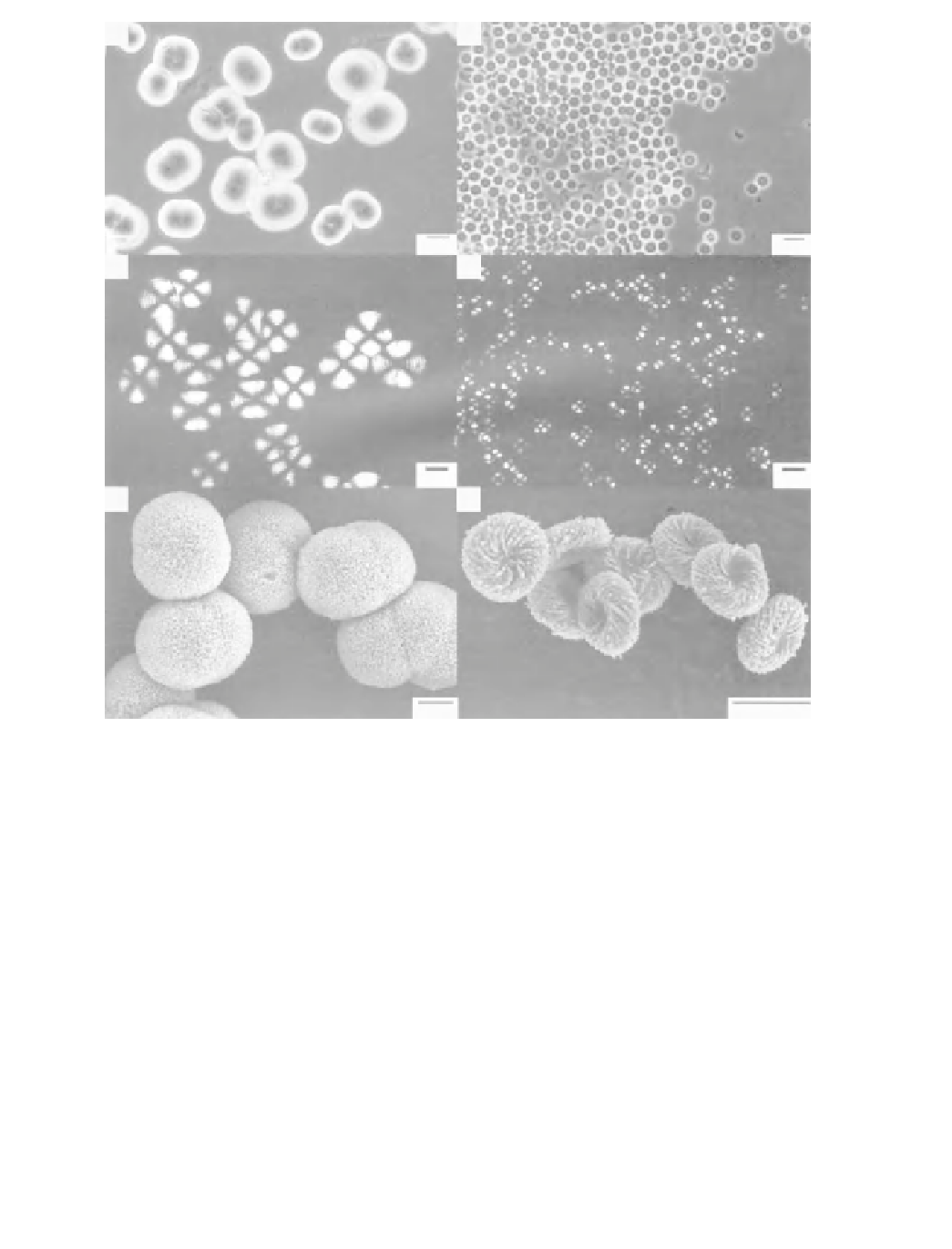Biomedical Engineering Reference
In-Depth Information
(a)
(b)
10 μm
10 μm
(c)
(d)
10 μm
10 μm
(e)
(f)
10 μm
10 μm
Figure 2.3
Photomicrographs of spherical (a,c,e) and toroid (b,d,f) spherulites obtained from
slowly cooled, jet-cooked, high amylose corn starch. (a) and (b), phase contrast light micrographs. (c) and (d),
polarized light micrographs showing birefringence. (e) and (f), scanning electron micrographs.
considered to be a problem in the papermaking industry, current research has shown that
potentially valuable new forms of bio-based, biodegradable, particulate materials can be
obtained if their formation can be controlled and increased by adjusting the methods used
for processing.
In summary, the effect of excess steam jet cooking on starch properties has been investigated
and this method of starch processing has been used to prepare starch-natural gum composites,
spherulites from amylose-fatty acid complexes, and stable starch-oil composites that contain
micrometer-sized oil droplets in an aqueous starch matrix. Commercial applications of the
starch-oil composites in foods, lubricants and lotions are under investigation. A major
advantage of steam jet cooking as a processing method is that high temperatures and intense
mechanical shear can be continuously applied to aqueous starch slurries, as well as to aqueous
mixtures of starch and non-starch components. Also, the equipment used for steam jet cooking




Search WWH ::

Custom Search